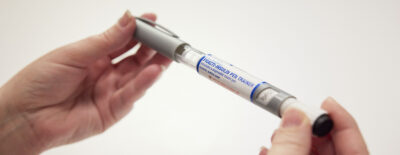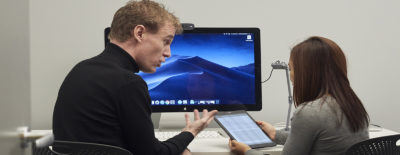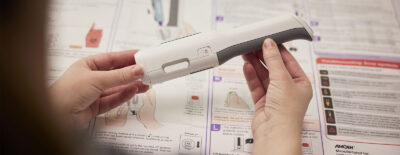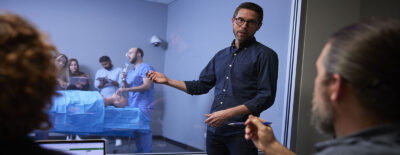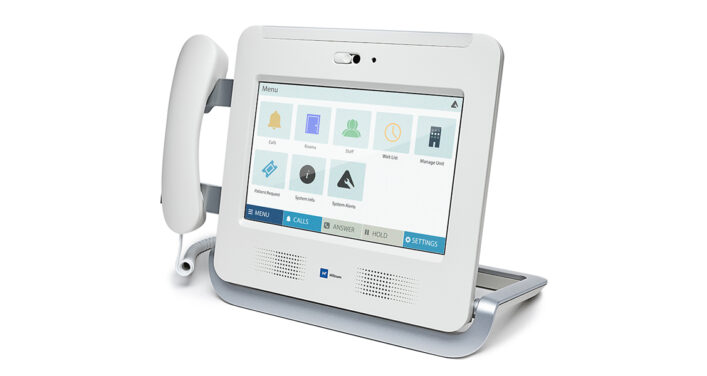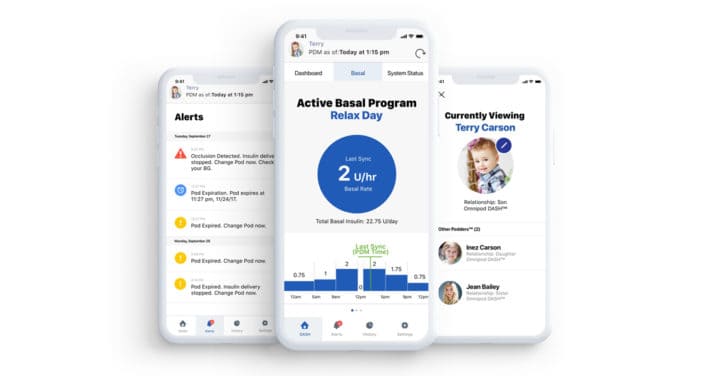Human Factors
CREATING SAFE & EFFECTIVE MEDICAL DEVICES
Human Factors helps create products that are not only safe and effective to operate but also desirable and easy to use. We apply a human-centered design approach through contextual research, use-related risk and adverse event analysis, and usability testing to improve the safety and effectiveness of your product and minimize use error. THRIVE provides everything you need to meet FDA’s and other regulators’ human factors expectations and successfully get your new medical devices to market.
WHAT IS HUMAN FACTORS?
Human factors is a multidisciplinary practice focused on understanding human capabilities, natural inclinations, cognitive processes, physical abilities, or constraints. We use this understanding of human behavior and capabilities to create new product designs that seamlessly align with the way humans interact with and approach a product in the real world around them. Human factors meets at the intersection of psychology, design and systems engineering, helping medical device companies with the design of equipment and products that are not only intuitive and satisfying to use but also reduce cognitive load, mitigate human error, and ensure that your products are designed to fit the user – not the other way around.
WHY IS HUMAN FACTORS IMPORTANT?
Commercial success hinges on the quality of a users’ interactions with your product. It needs to be usable and intuitive, elevate human performance, and reduce the amount of “trial and error” experienced during the user experience. Good ergonomics and exceptional usability will help make your product safe and mitigate harmful use errors and interaction issues, so that the product effectively does what it is intended to do. Developing an intuitive and effective product can be incredibly challenging without a deep understanding of your products’ end users – and all of the unexpected things that can go wrong during use.
But, achieving commercial success in the medical device and pharmaceutical industries with medical device and combination drug-delivery devices is not feasible without first receiving regulatory approval or clearance. A comprehensive human factors design program is an essential requirement of your regulatory submission to ensure that your product is not vulnerable to potentially harmful decision-making and human error when placed in real-world use. Aligning your product development efforts with the regulatory expectations is of the upmost importance and helps smooth the path for a successful submission.
HOW CAN THRIVE HELP?
Our in-house human factors professionals have decades of experience in human factors psychology and applying human factors methods in a wide range of work environments and industries. At THRIVE, we work alongside you to progress your project, anticipate needs, fill in gaps, and act as a guide for you and your human factors engineering needs. If it’s your first time applying human factors and you need a comprehensive end-to-end human factors program, we’ll scope out the program and conduct the activities on your behalf, leaving you time and resources to focus elsewhere. If you’re a HFE professional who is resource-constrained, we’ll step in, providing the teamwork, collaboration, and support to help you meet your goals. Or, if you just want a final sanity check to ensure you’ve met the latest and greatest expectations, we’ll do that too.
Our human factors specialists are up to date on the latest human factors regulations set forth by the FDA in the United States, as well as other regulators worldwide, and will guide you from a strategy and execution perspective.
We have extensive experience applying human factors to products ranging from medical devices used by specialized healthcare professionals in clinical environments to combination products used by laypeople in the home to in-vitro diagnostic systems or reprocessing workflows used by technicians in the lab. Regardless of the type of product you’re developing or the users you’re creating it for, we’re here to help.
Collaboration begins with a conversation. Reach out to THRIVE today.
-
Our Full-service Approach is to Your Advantage
THRIVE is a full-service consultancy with a diverse team working to solve your problems at any stage of the medical device design process. Working as an integrated extension of your team, we expand your ability to develop innovative medical devices through a seamless process that spans capturing user needs and defining requirements to product definition and detailed device design. Our consultants are particularly adept at integrating Human Factors into large organizations’ design processes, bringing the objectivity and expertise needed to navigate regulatory hurdles and achieve full compliance successfully.
-
Identify the Critical Insights Needed for Better Device Design
We provide tailored formative evaluations to identify potential usability issues and unanticipated use errors with your device. A fundamental tenet of our approach is the importance of early, regular assessment throughout the device design process employing heuristic analysis, expert analysis, task analysis & use-related risk analysis, comparative/threshold analysis, and formative Human Factors studies for optimum results.
-
Generative Research
We speak with users and observe their natural interactions to extract rich insights into their ideal product experience. Then, we translate these insights into actionable UI requirements to produce a product that seamlessly aligns with users’ needs and expectations.
- Contextual Inquiry
- Observations
- Stakeholder Interviews
- Competitor Benchmarking
- UI Requirements Definition
- Expert Interviews
- Focus groups
-
Instructional Design
High-quality instructional design and supporting documentation is crucial, regardless of whether the goal is to communicate complex workflows, or simply to help a user who gets stuck. THRIVE's combined expertise of human factors, information design and iconography ensures the development of simple, clear IFUs that help your user get it right safely and correctly first time.
- Instructions for Use (IFU)
- Quick Reference Guide (QRG)
- Content Development
- Illustration Style Development
- Visual Design & Layouts/Fold Patterns
- Packaging + Labeling
-
Achieve First-time FDA Approval
We make it easy for the FDA to approve your submission the first time. Our Human Factors validation testing approach generates the correct data to give you peace of mind that your regulatory submission is comprehensive and successful. We eliminate the need for multiple summative validation studies, using data strategically throughout the design and development process, pinpointing critical tasks, and expertly creating a Human Factors Engineering Report—explicitly tailored to meet FDA requirements.
-
Usability Testing & Evaluation
Iterative feedback and design are key to an intuitive, safe user interface. We conduct a variety of evaluations and usability tests to get to the root of usability issues and then develop recommendations to stop these issues in their tracks.
- Expert Review / Design Critique
- Formative Usability Testing
- HF Validation Usability testing
- UI Design Validation Testing
- Comparative Use HF Testing
-
Human Factors Analysis
Developing an intuitive, safe, and effective product starts with understanding how your product works, and then determining what can go wrong. We conduct a variety of analysis activities to help you design a product that is as safe as possible.
- Task Analysis
- Use-related Risk Analysis (URRA / uFMEA)
- Known Problems Analysis
- Threshold Analysis
-
Deliverable Development
Executing on research and analysis activities is one thing, but ensuring you have all of the documented puzzle pieces for a submission is another. We develop or review various deliverables to help you take credit for all of the hard work you’ve performed along the way.
- HFE/UE reports
- User profiles
- Use environment descriptions
- Use specifications
- User interface specifications
-
Regulatory Advising & Support
Navigating the regulatory landscape in US and global markets requires knowledge, as well as an attention to detail and nuance. We help you interpret, respond to, and execute on your regulatory needs and interactions to ensure the smoothest submission possible.
- Regulatory Strategy Development
- Pre-Submission Support
- Regulatory Advising (FDA, IEC62366-1, MDR, MHRA)
- Interpretation of Regulatory Feedback
- Responses to Additional Information Requests
- Attendance or Preparation for Regulatory Meetings
-
Understand How Your Device is Used in the Real World
It’s essential to fully understand how usable your device is in its actual operating environment after launch. We work with you to plan and conduct post-market evaluations, actively and systematically collecting data to detect trends, design issues, and usage problems. These evaluations include real-use device observations, surveys administered to the device users, and complaint analysis to assess and improve the usability of your device.
-
THRIVE Labs
THRIVE Labs is our state-of-the-art in-house usability lab consisting of two labs with adjacent viewing suites. Perfect for conducting various tests across devices and experiences, including Usability Tests, Formative and HF Validation Tests. For more on THRIVE Labs visit: thrivelabs.com
- Three (3) HDTV 1080p pan, tilt, zoom wall and ceiling mount dome cameras to cover every angle
- Two (2) Shure ceiling microphones and adjustable stereo sound equipment to ensure you don’t miss a thing
- Advanced real-time video streaming and recording services
- Dual large screen monitors for close-up views of those critical user interactions
- Respondent transcription services
- Respondent incentive handling, onsite parking, and complimentary WiFi
-
Advising and Education to Help You Succeed
THRIVE provides custom training and educational programs to ensure your team has the knowledge to incorporate Human Factors into the device design process successfully. Our consultants offer expertise in interpreting, setting up, and executing on regulatory requirements and integrating Human Factors into a quality management system. We also help organizations understand and apply these concepts practically while highlighting leadership’s role in promoting this approach—building capacity amongst staff members and ensuring the right tools and processes are in place so they can put theory to practice.



